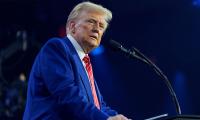The nNext presidential election in the US is scheduled for November 2020, almost 14 months away. However, campaigning is already in full swing.
The US is the oldest democracy in the world and rightfully prides itself at having an unbroken record of peaceful and democratic government transitions for over two centuries. Yet, the electoral system has continued to become more and more complex to the point that it appears the country is perpetually in ‘election season’.
The country has only two main political parties – the Democratic Party and the Republican Party. Presidential candidates for these parties are selected through a series of primary elections held in each of the 50 states over the course of about six months, even though campaigning begins more than a year ahead. Results from each of these 50 elections contribute towards the candidates’ total, roughly in proportion to the population of each state. The highest vote getter emerges as the candidate of the party and goes on to contest the general election in November.
While conceptually straightforward, the process of campaigning in 50 separate elections is taxing and extremely expensive. Over one billion dollars are spent on the primary elections alone.
There are many unforeseen impacts that arise from this system. A very small percentage of voters, about 10 to 15 percent, participate in primary elections. Usually these are the most diehard voters who have strong feelings about certain key issues such as immigration, health insurance or abortion. In order to win these voters candidates make extreme promises during primary elections, only to dial them back once they have secured their party’s nomination. This forces the candidates to have one platform for the primary electorate, and a
seriously watered-down version for the general election.
Another complicating factor is that anyone can run for a party’s nomination, regardless of whether they have had any affiliation with the party in the past. Quite often voters have no track record of a candidate’s public service to look at. In the current presidential electoral race, there are 20 candidates vying for the nomination of the Democratic Party. The winner will go on to contest against President Trump in November 2020.
It is near impossible for voters to properly assess what each of the candidates stands for. Television networks have tried to manage this crowded field by breaking up candidates into two groups and holding debates on consecutive nights, each fielding 10 candidates. Not surprisingly, most of the nation pays little attention to the campaigns for the first several months. This is quite a waste of national resources.
Another quirk of the US presidential election system is that while each citizen can vote, the president is ultimately chosen by what is called the “electoral college”. Members of this electoral college are not exactly in proportion to the population of each state. Consequently votes in certain smaller states get heavier weightage than some of the larger states. This is how Donald Trump was able to win the 2016 election even though Hillary Clinton received three million more votes.
All of these complexities and quirks have created a feeling of deep dissatisfaction among the population. In addition, since elections are so expensive to contest, once in office candidates have to pay more attention to those who fund their campaigns rather than those who voted for them. This is another reason the country remains paralyzed on key issues that are affecting daily lives of citizens such as, healthcare, immigration, and gun control.
Many of us wish there was a way to design, from a clean sheet of paper, a new electoral system that truly reflected the wishes of a majority of the voters.
The writer is a freelancecontributor based in Washington DC.
Website: www.sqshareef.com/ blogs
Most recently, US presidential elections demonstrated how AI has amplified partisan split
Few years ago, Pakistan ranked as fourth-largest freelancer market globally, with potential to become number one
Arts Council Karachi celebrated its 70th birth anniversary at inaugural session with big cake
There are over 11 million Pakistanis settled abroad, out of which around six million work in Gulf and Middle East
This year alone, US Treasury would have to roll-over $10 to $14 trillion in maturing short-term debt
Tear gas no longer marks just protest sites; it paints entire cities as battlegrounds but then again, PTI did it first







